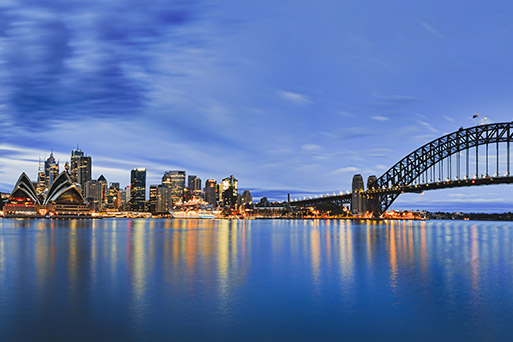Sydney’s housing market could be on course for a double-dip downturn as early as next month, after prices slowed faster than expected in November, sparked by the Melbourne Cup interest rate rise and a large lift in listings, CoreLogic data shows.
Home values in the city lifted by 0.3 per cent during the month, which is less than half the 0.7 per cent gain notched up in October and the smallest monthly increase since February.

Nationally, home values lifted by 0.6 per cent in November, which is the slowest monthly growth since February.
“With Sydney home values slipping into negative growth over the last week of the month, we could see Sydney following Melbourne’s lead, with home values stabilising or moving into a mild double-dip downturn in December and coming into early January,” said Tim Lawless, CoreLogic’s research director.
Melbourne’s home values slipped by 0.1 per cent in November, their first monthly decline since hitting the trough earlier this year.
“I think that fragility in buyers’ demand has been exposed by the latest rate hike,” said Mr Lawless.
“Borrowing capacity was further diminished, sentiment fell even lower, while lending tightened.
“But alongside that, those markets are also seeing total advertised stock rise above the five-year average, at a time when demand is quite fragile.”
Nationally, home values lifted by 0.6 per cent in November, which is the slowest monthly growth since February.
By contrast, house price growth accelerated in Perth, rising by 1.9 per cent in November, while Brisbane gained 1.3 per cent and Adelaide by 1.2 per cent. Hobart and Darwin fell by 0.1 per cent and 0.3 per cent respectively, while Canberra increased by 0.5 per cent.
AMP chief economist Shane Oliver said the negative impact of higher interest rates had taken over the forces that fuelled this year’s housing recovery.
“Sydney and Melbourne house prices are decelerating faster than expected, so I suspect high interest rates are now starting to dominate,” he said.
“Short of imminent rate cuts, which are most unlikely, it looks like the supply shortfall-driven rebound in home prices this year is rapidly coming to an end as high rates get the upper hand again.
“I expect national prices to fall between 3 per cent and 5 per cent in the next 12 months.”
Mr Lawless agreed that the downside risk factors for the housing market had become more pronounced.
“It is looking increasingly clear that the housing market is moving through a new inflection point, with the rate of growth in home values becoming more diverse, but generally weakening,” he said.
“The lower-than-expected monthly inflation outcome for October may help to allay fears of further rate hikes and lift consumer spirits a little, but the risk of another increase in the cash rate remains.
“We don’t expect to see a material lift in housing activity until interest rates reduce, and that isn’t likely until the second half of next year.”
Jarden chief economist Carlos Cacho said the thinly traded rebound was particularly vulnerable to the worsening housing affordability.
“I think a lot of it comes down to the fact that the price points in those cities are just so high that there’s quite a limited number of buyers who can afford to get in and afford to make the repayments compared to two or three years ago when interest rates were near zero,” he said.
“The recovery was also really driven by that smaller pool of buyers who have cash and large deposits and, as a result, that pool of buyers may not be sufficient to generate the same price growth that we’ve seen recently if listings continue to rise at this rate.”
Despite the heightened risk of a double-dip downturn, the underlying undersupply of new housing and the strong population growth would put a floor under prices, Dr Oliver said.
“The big positive is still the supply shortfall,” he said. “Even though immigration levels might be peaking, they’re still going to be high, which will drive demand – that’s why it’s hard to see a price crash, unless the economy goes into a severe recession.”
Originally published by Nila Sweeney in the Autsralian Financial Review. View article online HERE.


